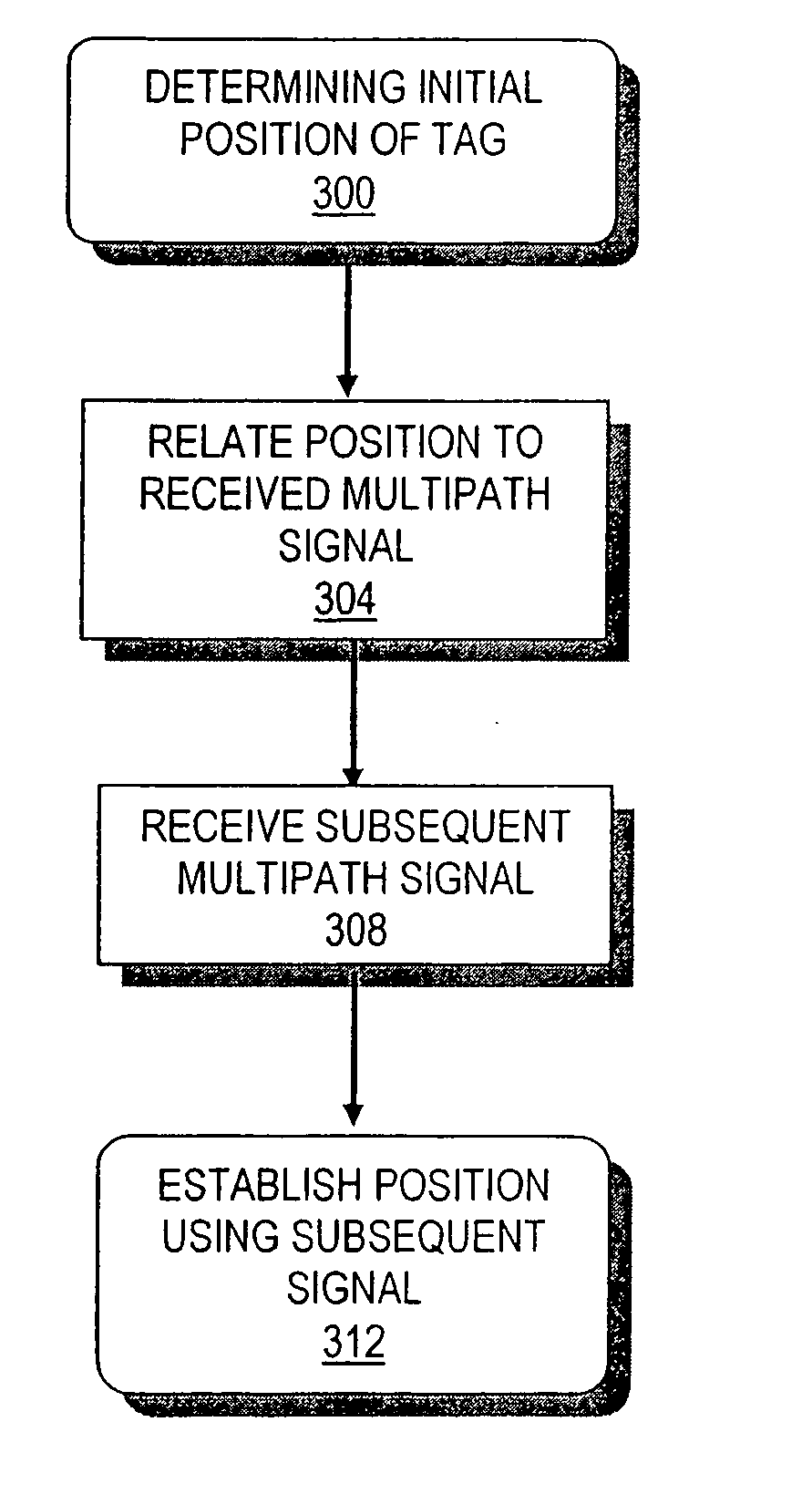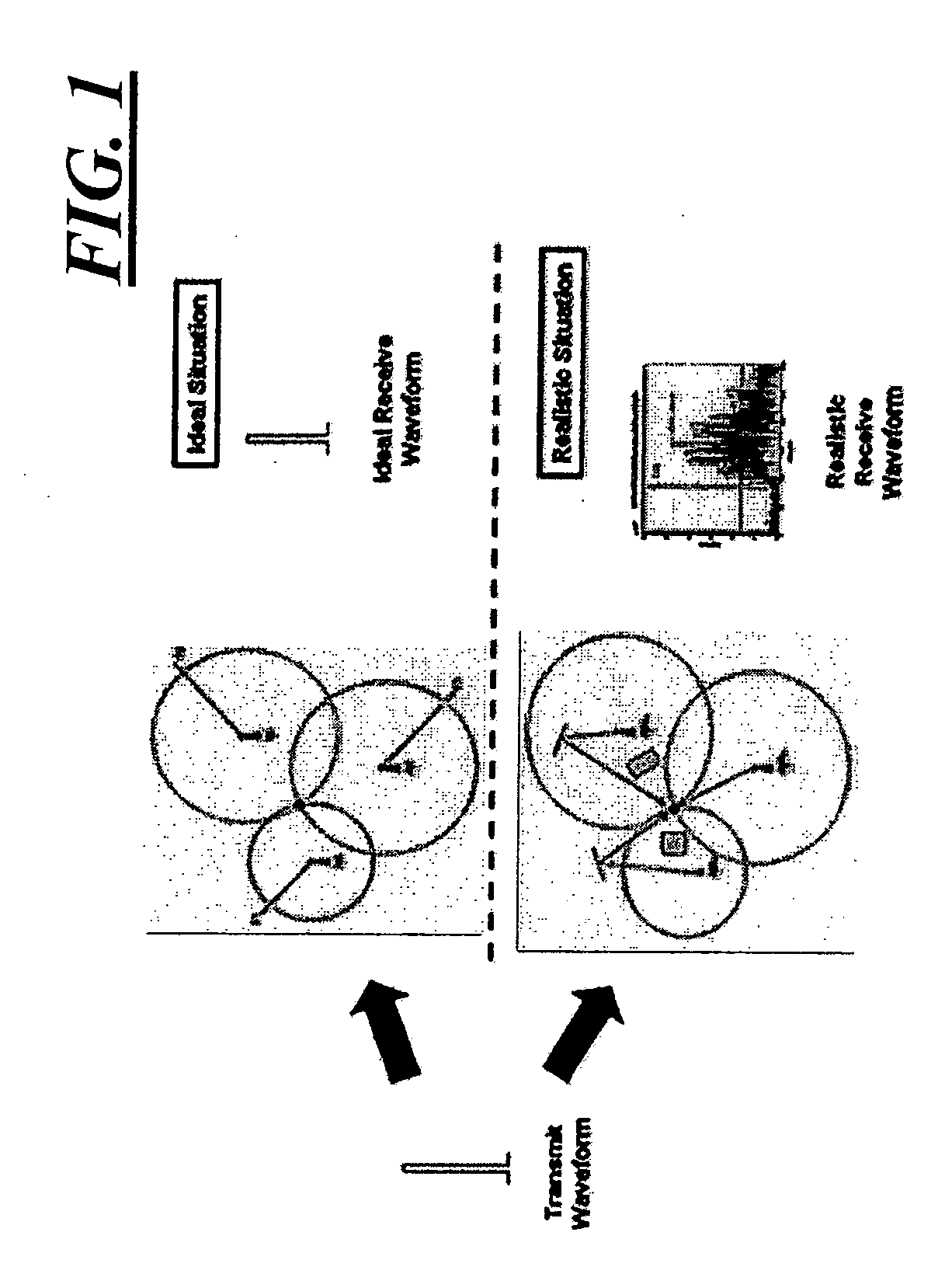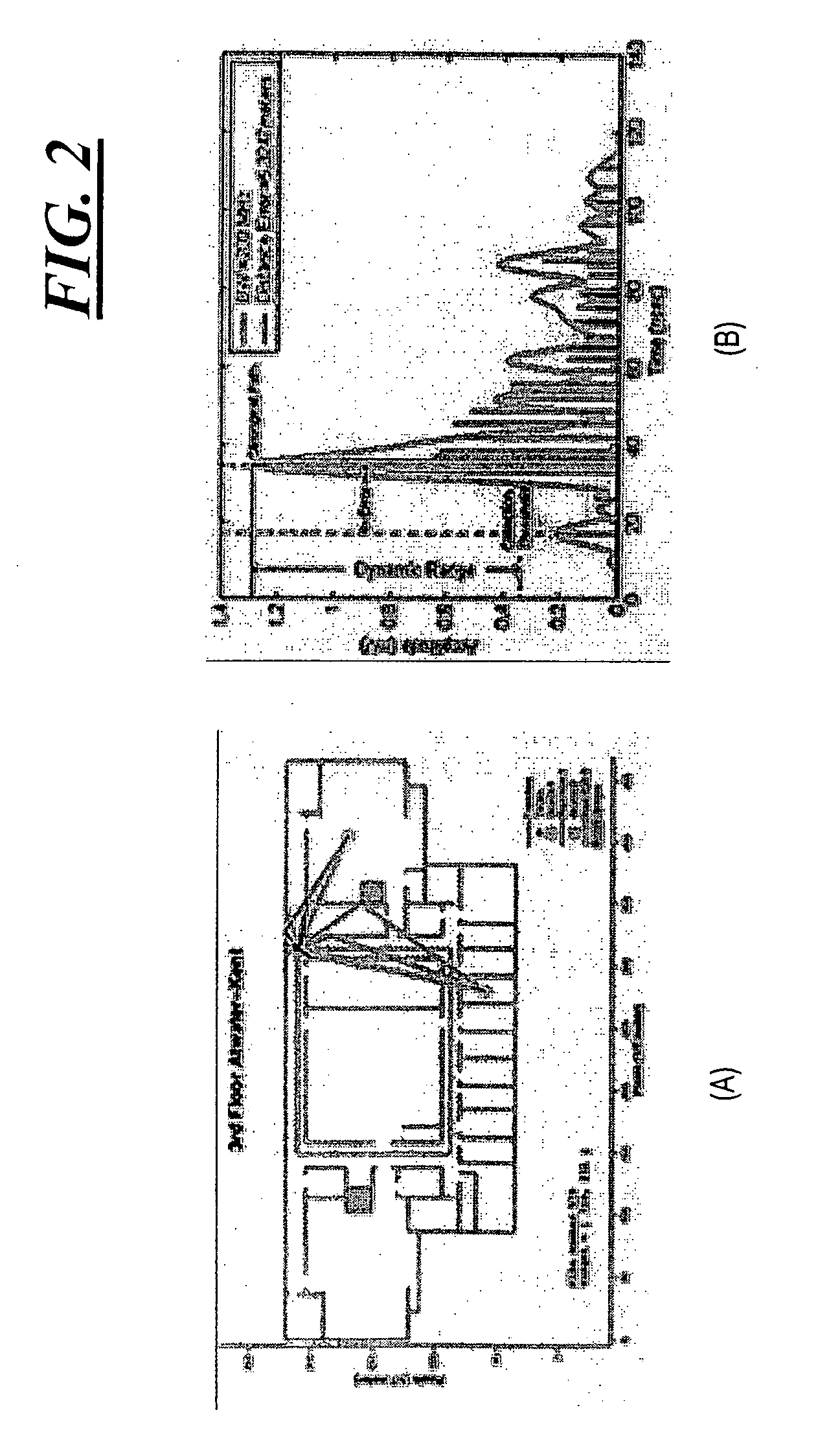Systems and methods for positioning using multipath signals
- Summary
- Abstract
- Description
- Claims
- Application Information
AI Technical Summary
Benefits of technology
Problems solved by technology
Method used
Image
Examples
Embodiment Construction
[0042]A number of approaches have been proposed for tracking people and objects inside buildings or in cluttered urban environments where GPS is not usable. Most of these approaches use RF phenomena, and performance typically depends upon the ability to determine the direct path distance from a number of reference sources to the person or object of interest. While many of these approaches have had some success, most have been limited in performance and reliability by RF multipath. Because of the many reflections and path attenuations that occur inside a typical building, an inability to consistently and reliably identify direct path distances has limited the effectiveness of these approaches.
[0043]In brief overview, embodiments of the present invention provide a signal processing technique that may be applied to indoor RF active, passive, or aided localization approaches. Rather than treating multipath signals as noise and attempting to mitigate multipath-induced errors, this techni...
PUM
 Login to View More
Login to View More Abstract
Description
Claims
Application Information
 Login to View More
Login to View More - R&D
- Intellectual Property
- Life Sciences
- Materials
- Tech Scout
- Unparalleled Data Quality
- Higher Quality Content
- 60% Fewer Hallucinations
Browse by: Latest US Patents, China's latest patents, Technical Efficacy Thesaurus, Application Domain, Technology Topic, Popular Technical Reports.
© 2025 PatSnap. All rights reserved.Legal|Privacy policy|Modern Slavery Act Transparency Statement|Sitemap|About US| Contact US: help@patsnap.com



